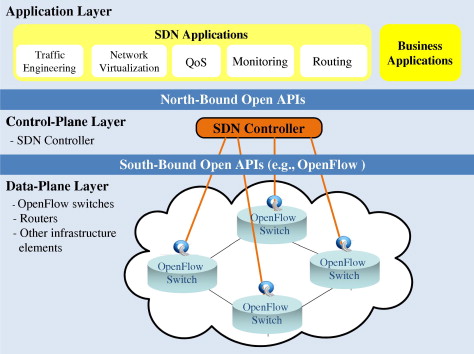School of Electrical and Computer Engineering Georgia Institute of Technology
This material is based upon work supported by the National Science Foundation under Grant Nos. 1547353 and 1763182.

Disclaimer: Any opinions, findings, and conclusions or recommendations expressed in this material are those of the author(s) and do not necessarily reflect the views of the National Science Foundation.
SoftAir: Towards to 5G Systems via a Software Defined Network Architecture
Overview
Existing commercial wireless networks are inherently hardware-based and rely on closed and inflexible architectural designs. Such inflexible hardware-based architectures typically lead to a 10-year cycle for a new generation of wireless networks to be standardized and deployed, impose significant challenges into adopting new wireless networking technologies to maximize the network capacity and coverage, and prevent the provision of truly-differentiated services able to adapt to increasingly growing, uneven, and highly variable traffic patterns.
Software defined networking (SDN) has been recently introduced primarily for data center networks and for the next-generation Internet. The main ideas are (i) to separate the data plane from the control plane; and (ii) to introduce novel network control functionalities based on an abstract representation of the network. SDN makes it easier to introduce and deploy new applications and services than the classical hardware-dependent standards. So far, the majority of SDN developments have concentrated on wired networks.
In this project, we propose the utilization of SDNs for next generation wireless networks and introduce a new architecture for Wireless SDNs (W-SDNs) and the solutions for related research challenges in this domain. Our proposed W-SDN architecture offers five core properties: (i) programmability; (ii) cooperativeness; (iii) virtualizability; (iv) openness; and (v) visibility. The above five properties provide functionalities that are essential to enable next generation wireless communication networks to possess the following promising features: Evolvability and Adaptiveness, Infrastructure-as-a-Service, Maximal Spectral Efficiency, Convergence of Heterogeneous Networks, and Low Carbon Footprints.
In short, the challenges faced by the current network architectures cannot be solved without a radical paradigm shift in the design of next-generation wireless networks. Hence, the research objective of this project is to propose a software-defined architecture for next-generation wireless networks, to develop essential enabling technologies to support and manage the proposed architecture, and to showcase its major benefits by designing novel software-defined cloud-based solutions, such as cloud-augmented spectrum mapping, software-defined spectral resource orchestrating, and virtualization-enabled traffic engineering. Our W-SDN solutions are expected to fundamentally address the spectrum inefficiency of current closed and distributed radio access networks and to meet the demands of fast-growing mobile traffic along with the rapidly-evolving and diverse network applications, thus providing uniform, ubiquitous network services for network users.
